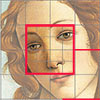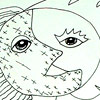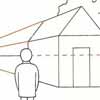Charcoal rods are some of the first drawing materials with which we can start working. So, when a person wants to learn how to draw well can start with this and to practice a lot. Charcoal is fine twigs toast to the ideal point. These twigs are soft enough to rid easyly as we brushed against the papers, but hard enough to get them, handle them and let our hand start taking experience and agility.
With the charcoal you can draw very fine lines, especially if sharp, making the point with a knife. Or you can make great spots. It depends if we press more or less, and it will be more or less dark. That variety of strokes is very good to practice and make many drawings, leaving work quickly and even if we wish, doing many details that require more time.

Charcoal technique is accompanied by the following materials:
- The charcoals, with different sizes and thicknesses. The thicker are used to spot large areas and the smaller to draw details.
- To blur the drawing we use Blending stump (also of various thicknesses), sponges, cotton cloth and cotton (ear swab can also be used).
- To darken we use pencil drawing (black and oily). And to create lights (especially if used dark papers ) light can be drawn with the rectifying elements, such as gums. This can be moldable gums. Also, we cas use chalk or white pastel, that we can apply above the drawing.
- To rectify or remove excess carbon, the first thing to do is to let go with a dry brush and gently blowing. Later, we use the swabs and the blending stump. When there is no way to extract the coal, otherwise we can use the mouldable gums for charcoals. These gums can be modeled, so we can modele the shape with the ideal size to delete. Chalk or white pastels can also be used to rectify.
- White or colored paper. To practice there are many economic roles (such as brown paper), which in the art schools are used with the full size of 60 cm by 90 cm, but can be cut to the desired size. Never with plastic papers, where it is impossible to draw. For more elaborate work, quality papers should be used with more carbon absorbent capacity. The charcoal drawing papers used are the Faber Caster or Ingres, who are having a grammage paper thin, medium or thick but high quality.
To prepare the Blending stump
The Blending stump are actually rolled paper forming a stick, but a bit sticky for its leaves remain attached. As paper absorbs and distributes the coal removed, which can work very well to create chiaroscuro.
The blending stump is too much hard when it’s new, so we must prepare it before using. This is done by first hitting the stump with a hammer. It should be a medium strength so go slowly softening but not will ever break or fail. We rotate the stump and go with the punches noting that just being a stick but resilient surface. When it is quite soft, set it upright and give a sharp blow to the lower tip to go up top more pointed tip. In the end it should be sanded with fine sandpaper wood to its tip ends up being a smooth and uniform. As we go to draw littering the stump will have to go by cleaning and better defined with the same sandpaper tip fixed. Sanding always in the same direction, for example, by grasping the handle from above downwards, where the tip.
Techniques with crayons – Tips for working well with the charcoal.
First plot the drawing with charcoal medium. When drawing a mistake, just give it a few blows with a cloth and carbon paper jumps. So above is redrawn, but not be marked strong strokes until it is the correct picture
Areas with large spots of coal (such as black backgrounds) are made by putting the side of the charcoal, especially with the ones we have with a size of 6 ‘or 7 centimeters, and with this we can spot the area quickly.
You can also use the color black powder (as if it were the striped charcoal powder) when there are large dark areas and expand sponge or with a thick stump.
We can work on a horizontal table whenever it´s necessary, for example to expand large areas of black stain and to prevents the coal staining the rest of the drawing.
To create shadows often used stump himself, because when it´s spotted it spots, and serves as a soft pencil. This even work staining the stump over the area with charcoal and drawing again the soft shadows. To which you can add more coal and to blur.
The drawing is being phased setting, so as not to dislodge coal and power applied and darken some areas of the paper. If there is no fixative, hair lacquers serve too.
You must be very careful and not to grease the paper with your fingers or with common rubber. It makes impossible to remove and do not allow to be covered with black spots.
Sometimes charcoals have knots that are harder and scratch paper. It must ensure that the charcoal does not have it and sanded when the knots are detected.
We should also be very careful with our own hands once stained, especially with arms if we work on a table, and the part of the palm with which we usually rely on paper.
The last stage of the work must always set the charcoal with fixative, because this will protect the drawing. Gently with your finger, you can verify that no longer follows coal and that is fixed. Otherwise, it needs more fixative spraying. Once well established should not add more charcoal or rectify. And finally, it must be framed with glass.




